













Balance is the capacity to distribute the body's weight so that it's possible to stand or move without falling and recover a trip Balance requires the coordination of various body parts, including the central nervous system, inner ear, eyes, muscles, bones, and joints. Problems with any one of these can affect balance. Medical conditions such as stroke, multiple sclerosis, Parkinson's disease, Meniere's disease, cataracts, macular degeneration, and glaucoma can all impact balance.
Weakness in major muscles, notably in the thighs, abdomen, and back, as well as nerve loss in the legs and feet (peripheral neuropathy), might impair the capacity to perceive the ground standing on. Godman stressed that many components of the balancing system deteriorate as we age. Vision and hearing do not work as well as they used to; nerve messages can become garbled, muscles shrink and weaken, joints wear out, and our brain may not be as quick to adjust to maintain balance.
According to Sturnieks, biomechanically, balance control is the ability to keep the body's center of mass within the constraints of its base of support in the horizontal plane. Simply stated, a body's vertical line of gravity operating through the COM (also known as the center of gravity) must remain inside the BOS (the area bounded by body components in contact with a support surface) to maintain equilibrium in posture. Falling is defined as a loss of balance control, which occurs when the COM's vertical projection flows beyond the BOS Without an effective balance-correcting reaction or external intervention to prevent the falling state and restore postural equilibrium, a fall (to the ground or another lower level) will occur.
Sturnieks also stated that biomechanical studies have attempted to explain better falling by defining balance control during standing, walking, transitioning between postures, and responding to unanticipated perturbations. These studies supplement epidemiological and physiological investigations of fall risk. Findings can serve to inform the creation of intervention techniques, which can then be evaluated using biomechanical research.
According to the research, balance is an effective instrument for measuring a person ' s overall physical health. This is crucial at any age. Although people commonly identify loss of balance with elderly folks, researchers have shown that the deterioration begins in midlife, around age 50. Including a balancing test in an annual physical checkup may aid in the early detection of musculoskeletal weakness.
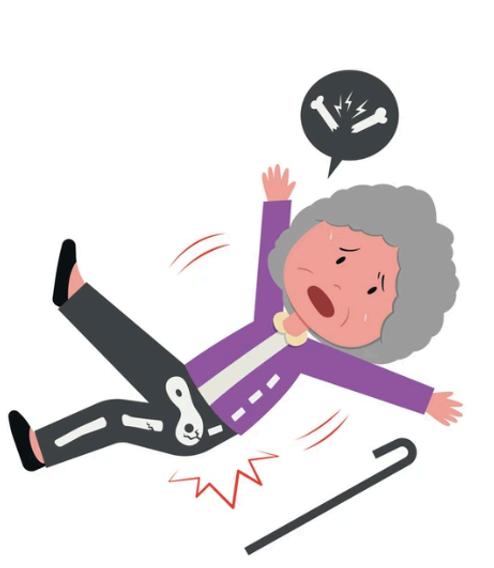
Balance in the human body is maintained through a complex network of intertwined pathways that collaborate to ensure dynamic stability regardless of static or ambulatory posture. The spine prefers to work within a cone of equilibrium that works to maintain sagittal and coronal alignment while using minimum energy expenditure. The body must connect the cervical, thoracic, and lumbar lordosis, as well as pelvis position. Mechanical balance in the sagittal and coronal plane centers around cranial mass, femoral heads, and lower extremities. We have discussed the importance of observing the spine from the coronal plane in our last newsletter regarding scoliosis (Keiser Research Club, 2024)
Postural balance control is deeply dependent on the integration of motor, sensory, visual, cognitive, and vestibular neural interplay. The central nervous system, predominantly the vestibular system, aggregates a vast quantity of sensory signals to produce corrective motor responses. The vestibular system is an incredibly intricate and extensive network comprised of the labyrinths within the inner ear, the spinal cord, vestibular nuclei, extraocular motor nuclei, the thalamus, axial and limb musculature, the cerebellum, and the cerebral cortex. The immense intricacies of the entire vestibular system are extremely extensive and thus beyond the scope of this newsletter, henceforth we will aim at discussing a broad overview of how humans maintain balance, how our balance changes as we age, certain pathologies involving the vestibular system and treatments currently being studied to help maintain and improve our balancing abilities.
6,7,8
The components relaying vestibular signals are in constant interaction with each other to ensure the most accurate and up to date information is immediately communicated throughout the entire network. The vestibulocochlear nerve receives information from specialized cells within the inner ear and sends that information to each of four nuclei which project to the spinal cord, extraocular muscles, thalamus, and cerebellum.
The inner ear consists of the bony labyrinth in each ear. Within each ear there is a vestibule, three semicircular canals, and the cochlea filled with specialized sensory cells that are surrounded in liquid. This liquid allows the specialized cells to float around sensing minute position changes. Each semicircular canal is responsible for a different motion direction to ensure our bodies can properly react to their environment. This information then gets sent to either the vestibular nuclei or the cerebellum.
The vestibular nuclei send their information down the pathway to the spinal cord, extraocular motor nuclei, the thalamus, or the cerebellum. In the spinal cord, the nuclei synapse on the ventral gray horns which are responsible for ventrolateral muscles of the trunk, neck, and proximal portions of the limbs. Cranial nerves 3,4, and 6 also synapse with the vestibular nuclei, these are the nuclei responsible for control of ocular musculature. The thalamus acts as a relay center that receives information from vestibular nuclei and projects it to the cerebral cortex. The cerebellum takes information from the vestibular nuclei, processes it, then bounces it back into the vestibular nuclei to then aggregate with information from CN3, 4, and 6. The cerebral cortex is the final destination of all visual, proprioceptive, orientation, and motion information. The vestibular and parietoinsular vestibular cortex take on the majority of oculo-vestibular processing.
Each part of this system must occur simultaneously to allow us to respond to our environment quickly, safely, and correctly. Any disruption along the pathway can result in significant and possibly life-altering symptoms. From a chiropractic standpoint, while many neurological and vestibular disorders lie just outside our scope of practice, we have many effective tools that can give patients relief from symptoms and improve quality of life. An area we see some of the greatest improvements in daily living is within the geriatric population.
As we age, risk of falling is increased because functions decline, the probability of accumulating medical issues increases, and associated medications are often increased. As we ’ ve already discussed, effective coordination of multiple neural components is necessary for balance and subsequently normal gait patterns. Regular aging impairs the basal ganglia, brainstem system, muscle tone, and functional
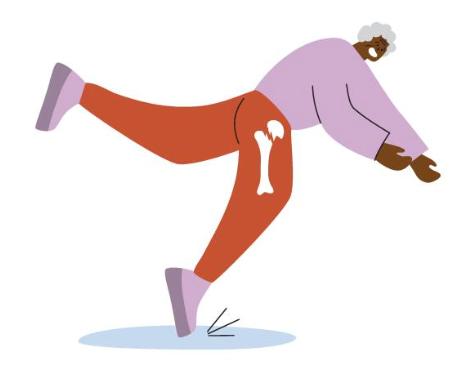
processing of sensory information. Falls frequently occur when long term predisposing issues within the systems abruptly interact with short term environmental factors. For example, long term, age-related lower-limb muscular atrophy abruptly interacting with stepping on an unstable surface.
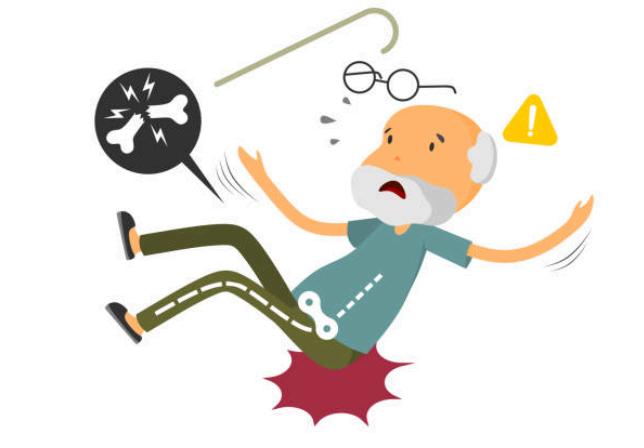
Many departments within the healthcare system tend to look at ways to adapt the living environment to make motion and ambulation more accessible when efforts may be better spent creating more resilient, self-reliant older adults. This is an extensively multifaceted undertaking that requires intense collaboration across a variety of healthcare providers. Fall risk escalates as the number of risk factors increases. These risk factors include but are not limited to history of falls, impairment in balance, agerelated muscle atrophy (sarcopenia), visual problems, polypharmacy (defined as taking over four medications) or psychoactive drugs, gait difficulty, depression, and pain. Many risk factors would be greatly reduced with patient
education and increased support. With aging usually comes a wide-based gait, decreased gait velocity, step length, and lower limb strength. Many older adults without disabilities are assisted with mobility aids that aim to reduce the user ’ s self-reliance and physical effort rather than teaching the user how to fall to prevent injury, more efficient movement patterns, and ways to increase strength. Muscle mass decreases approximately 3–8% per decade after the age of 30 and this rate of decline is even higher after the age of 60. Reduced muscular strength is one of the easiest risk factors to modify. As chiropractors and healthcare clinicians in general, we have the ability to rewrite the narrative of these older adults by prescribing preemptive physical therapies and other preventative exercises to prevent older populations from experiencing Impairments in balance to begin with.
These preventative treatment strategies can be effective two-fold in that preventing a first fall can prevent a lifetime of pain-reducing opioid use. Many older adults that experience falls end up subsequently requiring a hip or other joint replacement shortly after, if not immediately following a fall. Post surgical pain is an extremely common side effect of surgeries on large joints and many times the secondary pain these patients experience is excruciating, debilitating, and result in very persistent pain that becomes drug resistant. This is a space where chiropractors and health practitioners in general, have already begun to play a huge part in changing the pain narrative by giving patients a strong base of knowledge and support to strengthen their own bodies before and after surgery, falling safely, and using conservative strategies to prevent the need for joints to be replaced and thusly prevent reliance on opioid usage for pain relief.
According to Ataullah et al, the cerebellum which is situated under the posterior cerebral cortex and lies within the posterior cranial fossa, slightly posterior to the brainstem, and has a significant connection to the spinal cord, brainstem, and the two halves of the cerebrum. The cerebellum is derived from the rhombencephalon and the hindbrain which divides into two hemispheres that are connected to the vermis. Anytime there is a midline cerebellum lesion, the patient will present with imbalancerelated symptoms. If there is a hemispheric cerebellar lesion the patient can present with a loss of coordination. Maintaining an individual’s equilibrium and assisting in the coordination of movements is a key role of the cerebellum. It is an essential region of the brain that maintains gait and balance while coordinating complex movements. Clumsiness and a “drunken gait” are the hallmarks of cerebellar dysfunction. Dysfunction of this important neurological structure can lead to balance and coordination difficulties which can manifest as ataxias, loss of balance, speech problems (dysarthria), visual disturbances (nystagmus), and vertigo which is a condition directly related to the Vestibulocerebellar system.

There are many different forms of cerebellar disorders, but one of the most common diseases is cerebellar ataxia. Radmard et al state, that the first and most common presentation of an individual suffering from cerebellar ataxia are gait and balance disruptions. Chiropractic Physicians are trained in understanding proper gait mechanics, and the presentation of cerebellar ataxia has a definite appearance. Many clinicians state that the
appearance of gait ataxia has an intoxication presentation. The patient will veer off of a straight path and will present with a shortened cadence. A common complaint that many physicians hear is that the patient has been experiencing more falls recently. This seems to be especially true if the room is dark or they have had their eyes closed. The patient may state that they felt their foot drag, had sudden balance loss, and fell out of “nowhere”. Falling with their eyes closed or while they are in a dark space suggests there is a sensory neuropathic component to their condition. To date there are only case studies on chiropractic care and cerebellar ataxia. More research should be performed to see how chiropractic care can benefit a patient with this uncommon cerebellar disorder.
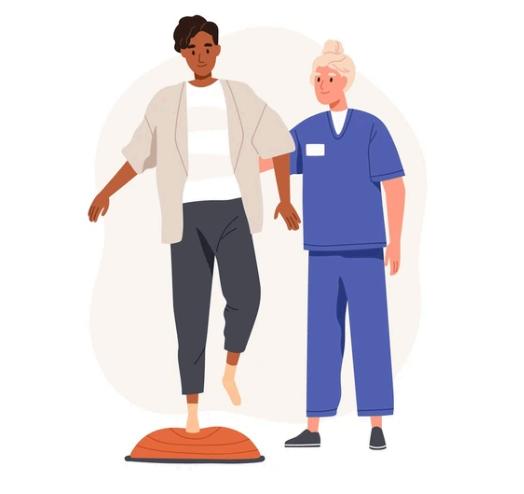

Balance training in rehabilitation is a crucial component for patients recovering from various injuries or conditions that affect stability and equilibrium. Whether it is rehabilitating from a sports injury, stroke, or age-related issues, restoring balance is fundamental to enhance mobility, prevent falls, and promote overall wellbeing. The primary goal of balance training is to improve proprioception and this is accomplished through targeted exercises. This allows for patients to re-train their muscles and nervous system to react appropriately. Exercises that balance training includes is specific to the patient’s individual needs and abilities. The progression includes static exercises (standing on one leg) to dynamic exercises (walking on uneven surfaces) to utilizing equipment (wobble boards) to challenge the patient to improve their adaptation and proprioception. The goal of this training is progressive overload. Integrating balance training into a comprehensive rehabilitation plan can yield benefits beyond improved stability, including enhanced cardiovascular fitness, promote muscle tone and flexibility, and contribute to physical and mental well-being. Balance training is an integral component of rehabilitation that fosters recovery, prevents injury, and enhances quality of life for individuals navigating the path toward restored mobility and independence. While balance training helps build strength and endurance, it also enhances confidence and functional capacity in daily activities.
Pilates is a way to improve balance while also promoting core strength, flexibility, and fostering a mind-body connection. Pilates is a controlled way to engage the deep stabilizing muscles of the abdominals, back muscles, and pelvic floor. This emphasizes the key goals of balance training in maintaining proper posture and alignment. The emphasis of flexibility in Pilates helps maintain range of motion and prevent stiffness that contributes to falls while also enhancing mobility and proprioception to reduce the risk of falls and improve overall balance. The mind-body connection helps encourage proper alignment while improving concentration and breathing to help older women become more aware of their movements and surroundings. This aids in having better control of their bodies and react appropriately to any changes in balance. Pilates as a tool of balance training helps makes rehabilitation more enjoyable and will encourage patients to participate for the recreation and also have a social component, providing motivation and support.
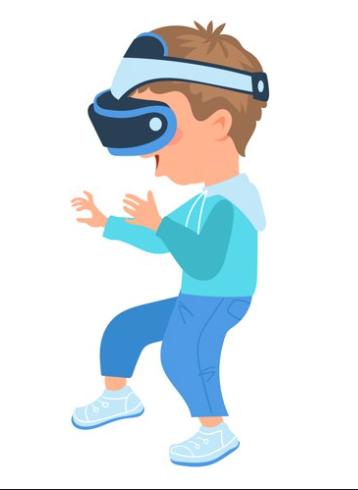

As patients age, their risk of falls greatly increases. It is important to incorporate balance training to aid in both prevention and treatment. A new method of training has started to be incorporated in balance rehabilitation. Virtual reality (VR) offers an innovative way to enhance engagement, motivation, and outcomes. VR offers a simulated environment that can be safer than traditional balance training. Mini games that simulate traditional rehabilitation exercises help make training more engaging and entertaining. The virtual scenarios
also allows for immediate feedback, which then allows the health care professional to progress and adjust difficulty levels as needed. VR training can revolutionize the way balance rehabilitation is delivered, ultimately improving stability, mobility, and quality of life. Combining traditional balance training with virtual reality training has shown


Balance and posture is considered to be established during childhood. Studies have shown that this reorganization happens at or around age 6. Although this change isn’t fully completed until around the age of 12 years old. This is when children change from visual-vestibular to somatosensory-vestibular control. It is hypothesized that children respond differently to balance training at different ages. A specific study aimed to look for age differences in different types of balance training. The training interventions included a balance circuit, parkour with obstacles and competitive balance games. The balance circuit included exercises like walking over bars and walking on a mat of free moving balls underneath. The parkour included obstacles that the children had to cross over that were unstable. Competitive balance games included hopping on one leg, standing on a small surface while trying to make their opponent lose balance. The children then tried to do better than their previous scores in each exercise. Before these were implemented measurements were taken. The first measurement was on force plates with basic standing for 15 seconds as still as they could. A second was a balance test on a two dimensional free-swinging platform. A third measurement of counter movement jump as high as they could on the force plate. Lastly, explosive strength of the foot plantar flexors was measured with an isokinetic dynanometer. During this test participants were supine and asked to plantar flex as fast as they could. After five weeks of two sessions a week it was found that postural control in transfer tasks and explosive strength were improved in the participants. The biggest development was found in the youngest group. It was assumed that the older groups had established postural control that the younger groups had not learned yet. This study shows that balance and posture can be trained in children as young as 6 years old and shows promise for fall prevention using vestibular training as an early conservative balance intervention.
1 Godman, H. Watch out for these balance busters. https://www.health.harvard.edu/stayinghealthy/watch-out-for-these-balance-busters. Published January 1, 2022. Accessed March 27, 2024.
Harvard Health Publishing Balance https://www health harvard edu/topics/balance Accessed March 27 2024
2. Sturnieks, DL. Biomechanics of Balance and Falling from Part I - Epidemiology and Risk Factors for Falls, Cambridge University Press. 2021; pp: 105 – 118 DOI: https://doi.org/10.1017/9781108594455.006
3. Ko, E. & Glazier, E. Balance Is a Surprising Link to Overall Health. https://www uclahealth org/news/balance-is-a-surprising-link-to-overall-health Published September 9 2022 Accessed March 27, 2024
4. Kim D, Davis DD, Menger RP Spine Sagittal Balance StatPearls 2023 https://www.ncbi.nlm.nih.gov/books/NBK534858/. Accessed April 15, 2024.
5 Yoo H, Mihaila DM. Neuroanatomy, Vestibular Pathways. StatPearls. 2022. https://www.ncbi.nlm.nih.gov/books/NBK557380/. Accessed April 15, 2024.
7.
6. Edwards C, Franklin E. Vestibular Rehabilitation. StatPearls. 2024. https://www.ncbi.nlm.nih.gov/books/NBK572153/. Accessed April 15, 2024.
8. Appeadu MK, Gupta V Postural Instability StatPearls 2024 https://www ncbi nlm nih gov/books/NBK560906/ Accessed April 15, 2024
10.
Volpi E, Nazemi R, Fujita S. Muscle tissue changes with aging. Curr Opin Clin Nutr Metab Care. 2004;7(4):405-410 doi:10 1097/01 mco 0000134362 76653 b2 Accessed April 15, 2024
9 Appeadu MK, Bordoni B. Falls and Fall Prevention in Older Adults. StatPearls. 2023. https://www.ncbi.nlm.nih.gov/books/NBK560761/. Accessed April 15, 2024.
11.
Ataullah AHM. Cerebellar dysfunction. StatPearls. August 14, 2023. https://www.ncbi.nlm.nih.gov/books/NBK562317/. Accessed April 1, 2024.
12.
Radmard S, Zesiewicz TA, Kuo SH. Evaluation of Cerebellar Ataxic Patients. Neurol Clin. 2023;41(1):2144. doi:10.1016/j.ncl.2022.05.002. Accessed April 1, 2024.
13
Długosz-Boś M, Filar-Mierzwa K, Stawarz R, et al Published April 1, 2021 Effect of Three Months Pilates Training on Balance and Fall Risk in Older Women Int J Environ Res Public Health 2021;18(7):3663 doi:10 3390/ijerph18073663 Accessed April 10, 2024
15.
14. Wälchli, M, Ruffieux, J, Mouthon, A, et al. 2018. Is young age a limiting factor when training balance? Effects of child-oriented balance training in children and adolescents. Pediatric Exercise Science. 30(1), 176–184 https://doi org/10 1123/pes 2017-0061 Accessed April 9, 2024
Sadeghi H, Jehu DA, Daneshjoo A, et al. Effects of 8 Weeks of Balance Training, Virtual Reality Training, and Combined Exercise on Lower Limb Muscle Strength, Balance, and Functional Mobility Among Older Men: A Randomized Controlled Trial. Sports Health. 2021;13(6):606-612. doi:10.1177/1941738120986803. Accessed April 10, 2024.